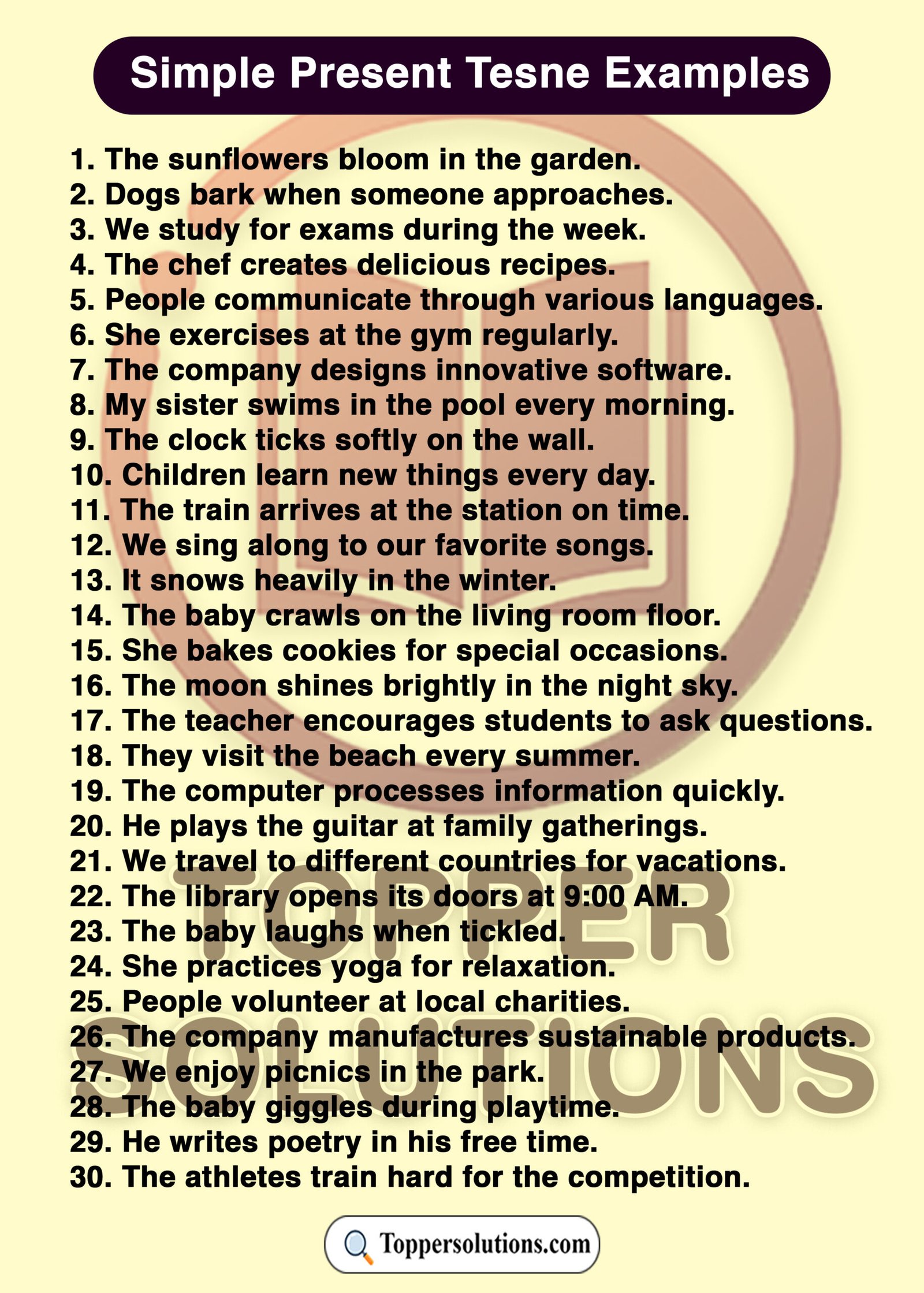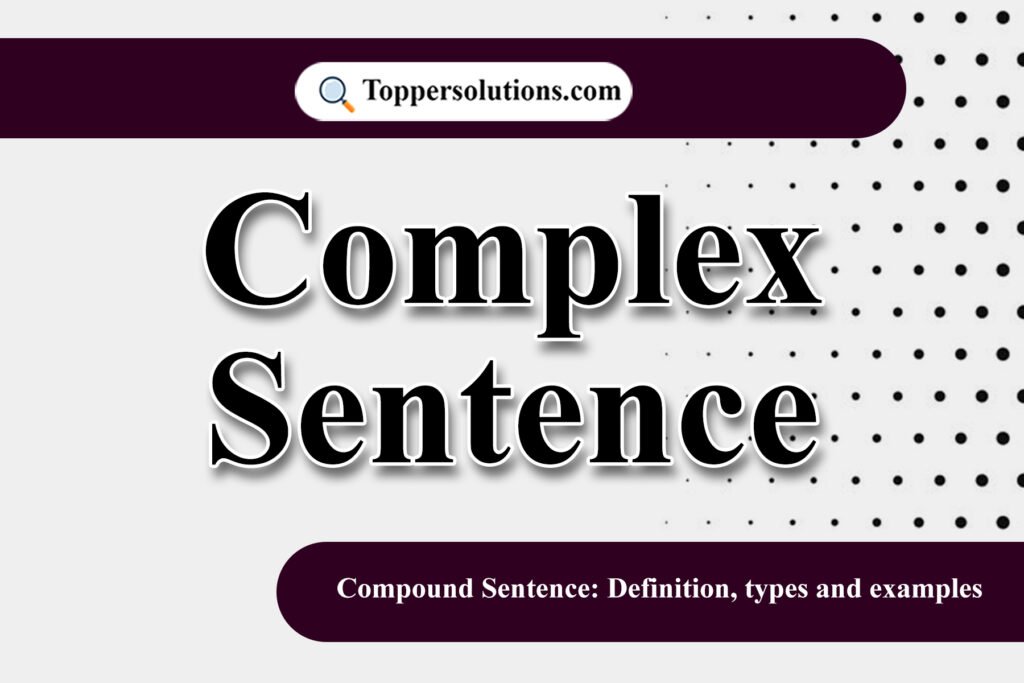Definition of simple present tense
The Simple Present Tense is a grammatical tense used to represent activities or events that occur now, in the present, and are thought to be habitual, routine, or generally true. It is also used to express scientific facts, mathematical facts, general ideas, and states of being that are not time-bound.
Examples:-
- I play tennis every Saturday. (habitual action)
- She works in an office. (routine activity)
- The Earth revolves around the sun. (general truth)
- The train leaves at 3:00 PM. (scheduled event)
- Two and two makes four. (mathematical facts)
- Water contains hydrogen and oxygen.
What is the Importance of Simple Present Tense in Communication?
The Simple Present Tense serves as a fundamental element in communication, offering a structured and straightforward way to convey information about routines, facts, and ongoing situations. Its versatility makes it an essential tool for effective expression across various contexts and forms of communication.
Structure of Simple Present Tense
- Affirmative: Subject + Main verb (V1) + object.
- Negative: Subject + Helping Verb (Do/Does) + not + Main verb (V1) + object.
- Interrogative: Wh/Helping Verb (Do/Does) + Subject + Main verb (V1) + object?
- Interrogative Negative: Wh/Helping Verb (Do/Does) + Subject + not + Main verb (V1) + object?
Examples of Simple Present Tense: (Singular Subject)
- He writes a letter.
- He does not write a letter.
- Does he write a letter?
- Doesn’t he write a letter?
Examples of Simple Present Tense: (Plural Subject)
- You write a letter.
- You don’t write a letter.
- Do you write a letter?
- Don’t you write a letter?

Where can I use Simple Present Tense?
- Habitual Actions/Regular actions
- Universal truths
- General Truths
- Scientific Facts.
- Mathematical Facts.
- In idioms and proverbs
- Imperative sentences.
- Pre-Plan future actions
- In commentary.
- With inherent qualities.
- Newspaper Headlines
- Spiritual or other Principles theories.
Habitual actions/Regular Actions Examples
- I drink coffee every morning before work.
- She takes a walk in the park every evening.
- They always arrive at the office by 9:00 AM.
- My mom cooks dinner for the family every night.
- We visit our grandparents every Sunday.
- He brushes his teeth twice a day.
- The bus leaves the station every half an hour.
- She reads a book before bedtime every night.
- They play tennis on Saturdays.
- The school bell rings at 8:00 AM every day.
Universal truth Examples
- The star shines at night.
- The earth revolves around the sun.
- The sun sets in the west.
- The sun rises in the east.
- Gravity pulls objects toward the center of the Earth.
General Truth Examples
- Dogs are known for their loyalty to humans.
- Many countries experience four seasons.
- Birds can fly.
- People need water to survive.
Scientific Facts Examples
- Oxygen is essential for the process of cellular respiration in animals.
- Matter is composed of atoms.
- Water contains oxygen and hydrogen.
- Electricity is the flow of electrons.
Mathematical Facts Examples
- The square root of 4 is 2.
- The multiplication of any number by zero equals zero.
- The sum of the angles in a triangle is always 180 degrees.
- Two parallel lines never intersect.
Idioms and Proverbs Examples.
- Actions speak louder than words.
- Where there’s smoke, there’s fire.
- Don’t count your chickens before they hatch.
- Every cloud has a silver lining.
Imperative sentences Examples.
- Don’t pluck flowers.
- Do your work.
- Let me play.
- Let’s start this task.
Pre- Plan action examples
- The team plays the championship game next Sunday.
- The concert starts at 8:00 PM on Saturday.
- My father retires next week.
- The P.M. of India visits Ajmer tomorrow.
Live commentary examples
- The team executes a well-coordinated strategy, securing an advantageous position on the virtual battlefield. They are dominating the game so far.
- The bowler delivers a fast-paced ball, and the batsman swings, connecting with the ball for a powerful drive to the boundary.
Inherent qualities examples:
- A mother loves her children.
- A father supports his son through thick and thin.
- Siblings share a bond that lasts a lifetime.
Newspaper headline examples:
- Global Leaders Convene for Climate Summit in Paris
- Pandemic Update: Vaccination Rates Rise, but Variants Pose Challenges
- Rover Successfully Lands on Moon.
- Promising Treatment Shows Positive Results
Spiritual or other Principles theories.
- Adherents of Jainism consistently follow the principle of ahimsa, choosing non-violence and compassion in their daily lives.
- Buddhists worldwide acknowledge the Four Noble Truths as a foundational guide to understanding and addressing suffering
50 Examples of Simple Present Tense.
- I work in a bookstore.
- She plays the piano beautifully.
- They live in a big city.
- The sun rises in the east.
- We go to school every day.
- He speaks three languages fluently.
- The cat sleeps on the windowsill.
- Dogs bark when they are excited.
- I eat lunch at noon.
- She reads a book every evening.
- The train departs at 9:00 AM.
- Birds sing in the morning.
- The Earth revolves around the sun.
- Water boils at 100 degrees Celsius.
- We visit our grandparents on weekends.
- The teacher explains the lesson.
- It rains frequently in the rainy season.
- He drinks coffee in the morning.
- The company opens at 8:00 AM.
- The moon controls ocean tides.
- She always tells the truth.
- They play soccer every Saturday.
- Trees provide oxygen for us.
- My sister dances in a ballet class.
- The computer processes information quickly.
- I like chocolate ice cream.
- The bus arrives on time.
- He wears a suit to work.
- I usually take a walk after dinner.
- The Earth has seven continents.
- The president delivers a speech.
- People celebrate birthdays with cakes.
- The sun sets in the west.
- We swim in the pool during summer.
- My parents visit us annually.
- The river flows downstream.
- The library opens at 10:00 AM.
- She runs three miles every day.
- The baby laughs when tickled.
- Fish swim in the ocean.
- The company produces quality products.
- I exercise at the gym regularly.
- Students attend classes in the morning.
- The car stops at the traffic light.
- We watch movies on weekends.
- The chef prepares delicious meals.
- The clock ticks loudly.
- They speak softly in the library.
- He usually wears glasses.
- The sunflowers bloom in the summer.
1. What is the simple present tense?
2. How do you form the simple present tense for regular verbs?
3. What is the difference between the simple present tense and the present continuous tense?
4. When do we use the simple present tense?
5. Do we use the simple present tense to talk about the future?
6. How do irregular verbs behave in the simple present tense?
7. Can the simple present tense be used in negative sentences?
8. What are some common adverbs used with the simple present tense?
Your school organized a ‘Nipun Mela’ Prepare a report for the local news-paper using the given hints and your experience. (planning, model display, stalls, decoration, visit of guests, prizes) NIPUN …
अंग्रेजी पढ़ना कैसे सीखे अंग्रेजी एक वैश्विक भाषा है, और इसे सीखना आज के समय में बहुत फायदेमंद हो सकता है। यहाँ कुछ तरीके दिए गए हैं जिनसे आप अंग्रेजी …
What is a complex sentence? Definition: A complex sentence is a sentence that contains an independent clause and one or more dependent clauses. An independent clause, also known as a …


2 thoughts on “Simple Present Tense: Rules, structure, 30 examples and uses”